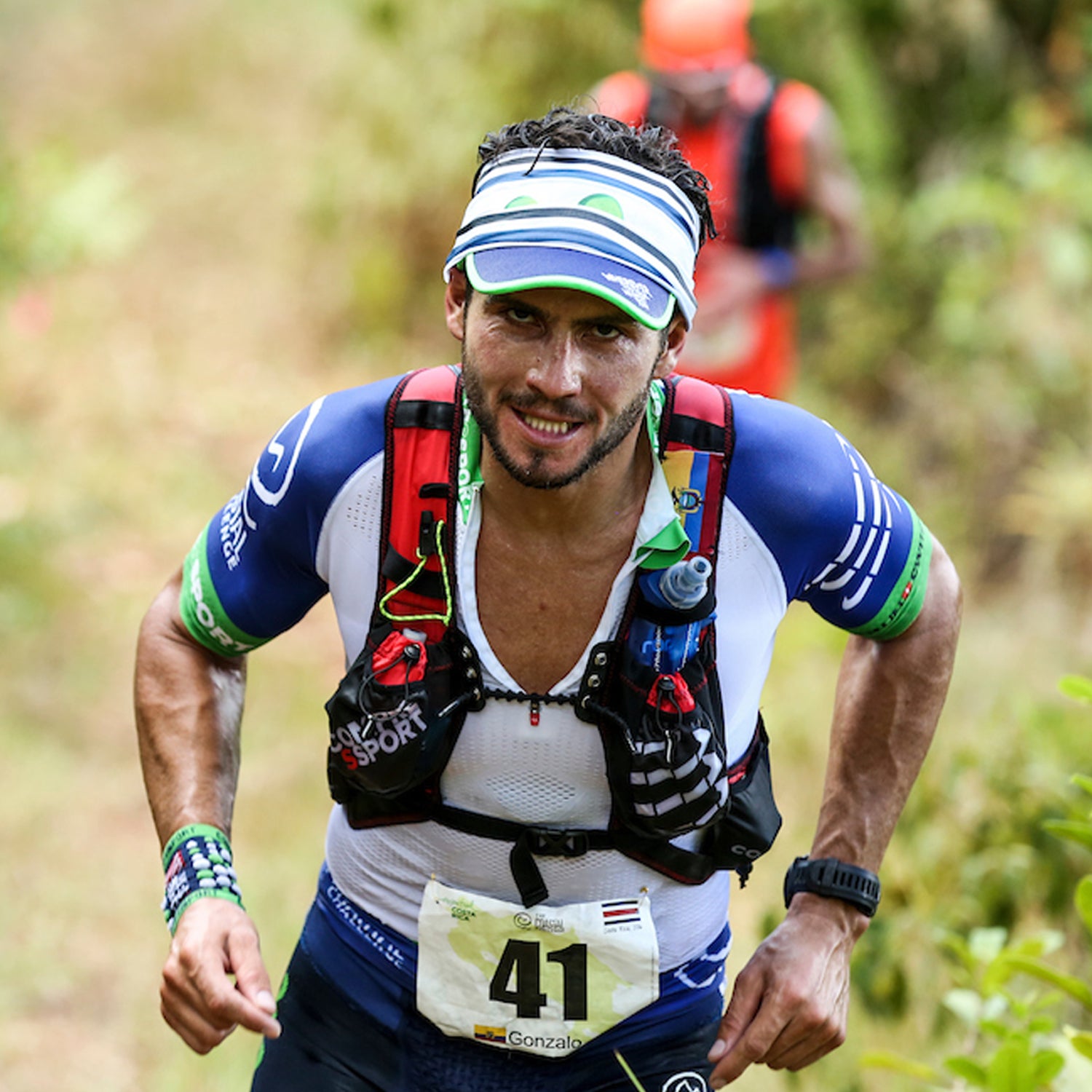Over the past few years, rumors have swirled in ultrarunning circles about how some frequent podium finishers seem so resilient to the endless, hard, mountain miles. But in mid July that Ecuadorian ultrarunner Gonzalo Calisto had been busted in a positive EPO test and subsequently disqualified from the prestigious Ultra Trail du Mont Blanc, it marked an important turning point for a sport that has thus far maintained a pretty wholesome image.
“To be honest, it breaks my heart,” says professional ultrarunner Mike Foote, who’s twice placed in the top five at UTMB. “The ultrarunning community prides itself on a deep we-are-in-this-together mentality, and Calisto being busted for EPO undermines this culture and this mutual respect and celebration of one another.”
But despite the mostly clean perception of the sport, which seems to be populated by an eclectic mix of forest nymphs, mountain lovers, and masochistic weirdos, instances of athletes using performance-enhancing drugs have actually cropped up since the early nineties. Runners who later tested positive for steroids have won both the 2012 Comrades and the 2013 Two Oceans Marathon. And in 2015, Italian runner Elisa Desco was called out by a number of athletes on Twitter when she was permitted to race at the North Face Endurance Challenge Championships after serving a two-year ban for a positive EPO test (she maintains that she is innocent).
The ultrarunning community prides itself on a deep we-are-in-this-together mentality, and this undermines our culture and this mutual respect and celebration of one another.
Many worry that as the sport grows and attracts bigger sponsorship money, the problem will only become worse. The number of ultra races has more than doubled in the last decade, and the more competitive ones now have waitlists and lotteries. While it’s still very hard for ultrarunners to make a living solely off of prize money, this increased sense of competition, coupled with greater sponsorship opportunities, means athletes have more incentives than ever to win. Sponsorships in particular can mean everything for an athlete. And though contracts may not be as high as those of other professional sports, some sponsored runners now make enough to quit their day jobs.
“In general mountain ultrarunners are a pretty laid back, cool bunch,” says pro runner Sage Canaday, who’s recently become an outspoken proponent of greater testing among ultrarunners, even going so far as to publish . “We like to be fair, enjoy natural beauty, and really just compete against ourselves for the most part.” But he suspects that the percentage of PED users is growing. “I think [the] positive test shows that athletes are willing to cut corners and use performance enhancing drugs in races that have no open prize money. So it's not just about the money.”
Calisto's case is perhaps the most high-profile yet, and it highlights a litany of problems that race directors and athletes will have to contend with if ultrarunning is going to avoid the cascading culture of PEDs that we now associate with cycling and track.
The first of these is that testing is extremely expensive—thousands of dollars per race—which is why it’s rarely done. Despite the sport’s growth, most trail races are still small enough that they simply don’t have a budget for administering tests. Even the World Mountain Running Association and Skyrunning, which have been testing racers for many years, can’t do it at every event, largely due to budget constraints.
Additionally, athletes at bigger races are tested before and after competitions, but they typically know well ahead of time if a test is coming. Plus, testing officials rely on urine samples, which are much easier to cheat than blood.
Ian Corless, a journalist and host of , pointed towards his co-host and fellow ultrarunner Karl Meltzer as an illustrative example of how infrequently ultrarunners get tested. While Corless is absolutely certain that Meltzer is and has always been clean, he says, “Karl has won more 100 mile races than anyone. He’s been running ultras for 20-plus years. You know how many times he has been tested for PED use? Never. Need I say more?”
The current testing process is also a lesson in pandemonium. In the case of Calisto, he tested positive after placing 5th at UTMB in 2015. But the organization that administered the test—a French drug control called AFLD—wasn’t required to inform the race of his results. UTMB claims they had no idea that Calisto had ended up on the International Association of Athletics Federations’ sanctioned list, and it was only after runner Robbie Britton and Corless alerted UTMB to the fact that one of their participating athletes had tested positive that the runner was disqualified. According to Corless, who has spent months investigating this recent case, the IAAF released their banned list in June of 2016, and Britton noticed Calisto’s name in early July.
When Corless asked the race organization for comment last month, they said it was the first they’d heard that Calisto had been sanctioned. In other words, if Britton hadn’t been notified, Calisto would have never been banned. “It is good news that someone has actually been caught, and hopefully it sends a warning to others that it won't be tolerated,” says Britton. But it shouldn’t be so complicated. “For UTMB to have been aware that an athlete had cheated at a previous edition of their race, it would appear that the only option is to check daily on the IAAF website for any additions to the sanctioned athlete’s list,” says Corless.
Calisto could not be reached for comment, but he did post following the ban, in which he denies taking any supplements to improve performance and criticizes the IAAF’s handling of the situation.
So, then, how can ultrarunning avoid the doping epidemic that has plague other endurance sports? Corless thinks that blood passports are going to be essential going forward. “Maybe it's time that we ask the top 100 male and top 50 female runners to pay for a regular medical,” he says. “Sage Canaday recently released a full report on his medical status; that's a good thing! Athletes of course may well say that they can't afford it, but this is where sponsors come in.”
While some races are taking major steps towards discouraging doping—Western States honors a lifetime ban policy on all runners who have tested positive, and the North Face is about to release their own comprehensive anti-doping strategy—Corless warns that lifetime bans could be more damning than useful, especially while the sport is still in the infancy of drug testing.
Ultimately it's the people and their accountability that may help the most in preserving the values in our sport.
Canaday believes that a more comprehensive governing body would help. “There needs to be more open communication and transparency—transparency with race directors, the testing agency, athletes, the media, and sponsors,” he says. “I think it's all about changing the culture. Sure, more tests would be great if races could afford them…but ultimately it's people (and their accountability) that may help the most in preserving the values in the sport. Test me at anytime, any place!”
Corless also thinks that the IAAF needs to find a better way (or just a way) to communicate newly sanctioned athletes to the relevant discipline. “This is where International Trail Running Association or maybe an athlete commission could be set up,” he says. “But we as runners, journalists, and sponsors must be loud and clear that doping is not welcome and we must do all we can to work together.”
Will this color the way fans, athletes, and sponsors look at past and future performances at the ultra distance? Let's hope not. There are still thousands of ultrarunners who believe in maintaining the ethos of a sport that is more about the journey than the destination, and more about teamwork, about getting to the finish line, than prizes, sponsors, or even competition. Just last month, during the same weekend that Calisto was busted, Kilian Jornet and Jason Schlarb won the prestigious Hardrock 100 together, holding hands.
“It's not a stretch for me to imagine what it takes to go top five at UTMB—I've done it twice,” says Foote. “To imagine cheating to achieve that feels so hollow to me. To cross that finish line knowing you cut corners to get there—where is the value, or meaning, in that? Even worse, to take away the emotions and feelings of accomplishment from others who took the high road is criminal. Those moments stay with you for the rest of your life and shape you as a person.” No one, he says, should be able to take that away.


